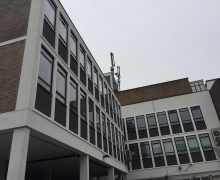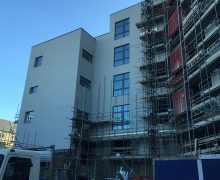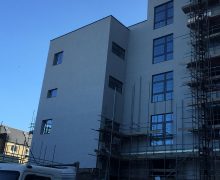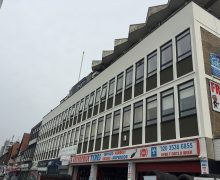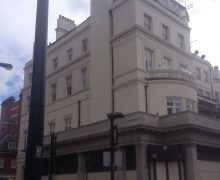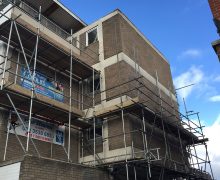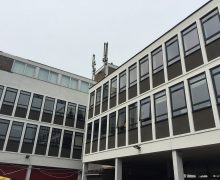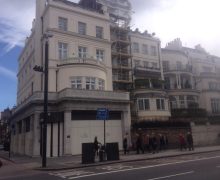Concrete Repairs
As a specialty repair contractor, LGECO business is Concrete Repair and Concrete Restoration. LGECO is not limited to a single concrete repair method; our experience and expertise combine specialized and conventional concrete repair methods to provide the most practical solution for all concrete repair projects.
From small concrete repair projects to multi-faceted multi-million pond full scale restoration projects in Itali and UK, LG ECO can deliver on every phase including:
- Assisting owners and engineers in problem identification.
- Development of concrete repair options and feasibility studies.
- Budget pricing of repair options and delivery options to meet your facilities needs.
- Turn-key delivery and management of the complete repair process.
- Maintenance Contracts
- Common Reasons Why Concrete Requires Repair
Concrete is widely used for everything from foundations to bridges. Water tanks, buildings.. It’s a strong, durable, and well understood material. But that doesn’t mean it’s going to last forever without a bit of attention and sometimes repair. In fact, concrete today isn’t even the same as the concrete that was poured for your commercial parking garage twenty years ago. Here are some of the most common reasons that concrete requires repair.
Rebar Corrosion
Concrete is often reinforced with steel rebar. The rebar is meant to help keep the concrete from crumbling. Unfortunately, the opposite seems to be the real problem. If rebar is exposed to excess carbon chlorides or dioxide, it will begin to corrode, causing the concrete around it to crumble, too. Rust can burst concrete.
ASR, Alkali-Silika Reactions
This is a serious problem for some concrete structures that were built before the reaction was well understood. ASR is a reaction within the concrete due to the chemical make-up of some aggregates. Alkaline cement will react with water, form a gel, and then cause cracks in the concrete.
Cavitation | Abrasion
Water will wear away at concrete over time, which is commonly seen in pipes and . Abrasion can also be due to physical wear from items such as forklifts.
Freeze-Thaw Deterioration
If air-entrainment isn’t sufficient, the concrete can become saturated with water, which then expands when it freezes. It then breaks down into its component parts: sand, aggregate and cement.
Repair is Possible
Fortunately, it is possible to repair concrete that is showing signs of any of these problems. Depending on the severity, large portions of the structure may need to be re-built. But with the right concrete repair team, you can often avoid a complete tear down. Most importantly, the cause of the deterioration should be identified so that the concrete repairs last and the problem doesn’t reoccur.
In parking garages and other structures
While concrete may seem solid and permanent, time and wear will start to show on any concrete structure or building. Especially in parking garages, where de-icing salts along with the weight and movement of vehicles can put a lot of pressure on the structure, it’s critical to watch for signs of degradation and to have repairs completed in a timely manner. Restoration projects can be completed on bridges, floors, and any structure made of concrete, as long as the problem is clearly identified and a good solution is well implemented.
Reasons for Concrete Restoration
Some of the reasons that concrete in a parking garage or structure needs to be restored have to do with water. Water can leak through cracks or failed joints. Water can also contain corrosive substances and chlorides that breakdown concrete or cause corrosion. And the alkali-silica reaction (ASR) in some older concrete structures can also break down the concrete, possibly requiring a repair or complete re-build.
Another common problem is rebar corrosion, as rebar can rust and damage the structure of the concrete.
What to Look for;
Visual signs of concrete deterioration are cracks, rust stains, efflorescence, water leakage, concrete spalling and hollow sounding delaminations. Other signs of deterioration include wear, exposed aggregates, discoloration and settlement.
What to Do
Ensuring that the concrete structures will remain safe and functional for years to come requires maintenance and repair. Contact LGECO and let us take a look at the structure and show you why we should be your repair contract of choice.
Removing deteriorated concrete and replacing it with traditional portland cement concrete is often still the most effective and economical way to repair concrete. From small repairs to major concrete restoration projects, LGECO can meet the precise requirements of any client.
Applications:
All concrete structures Benefits:
LGECO understands concrete mix design and can assure optimum performance with good concreting practices
Materials and equipment readily available throughout construction industry
Easy to assess the future performance and life expectancy of the repair
The cost of conventional repairs is very competitive
Can be combined with cathodic protection to substantially extend the life of structures
SPECIALIZED REPAIR
This includes repairs where specialized methods are used for concrete repair, such as a fast sealing mortars, acid resistant mortars and coatings and other special methods. LGECO has the in-house expertise and equipment to offer innovative solutions, and completing the most challenging concrete repairs in time and on budget. Many of our projects are completed during short plant shutdowns when there is no time for the use of conventional repair methods or materials. Some of the specialized repair techniques may include hydro demolition, surface preparation using high pressure water blasting, concrete pours with pre-placed aggregate, tremie concrete, shotcrete repair, work with cofferdams, overhead pumping of concrete into suspended forms, and the use of a wide variety of fast setting or other special performance repair materials.
LGECO applies overlays to resurface deteriorated floors that vary from several inch thick structural toppings to thin 1/4 inch thick polymer concrete overlays. Bonded overlays can be installed on new precast slabs to increase the load carrying capacity of the slab, or can be installed on top of repaired/patched concrete slabs to extend the durability of the repairs. In order for concrete overlays to perform as required, specially formulated shrinkage compensated, latex modified, high density, low slump concrete can be used. Thin systems provide resurfacing without adding much weight to the existing slab and can be trowel applied, spray applied, or self leveling. Specialized iron-aggregates overlays can be used for high impact and abrassion resistance. LGECO has years of expertise in the selection of the most suitable materials and equipment for your application. In combination with the other technologies that we have mastered, LGECO can be your single source contractor for all your concrete problems.
Contact LGECO today for a FREE Concrete Repair & Restoration Quote.

